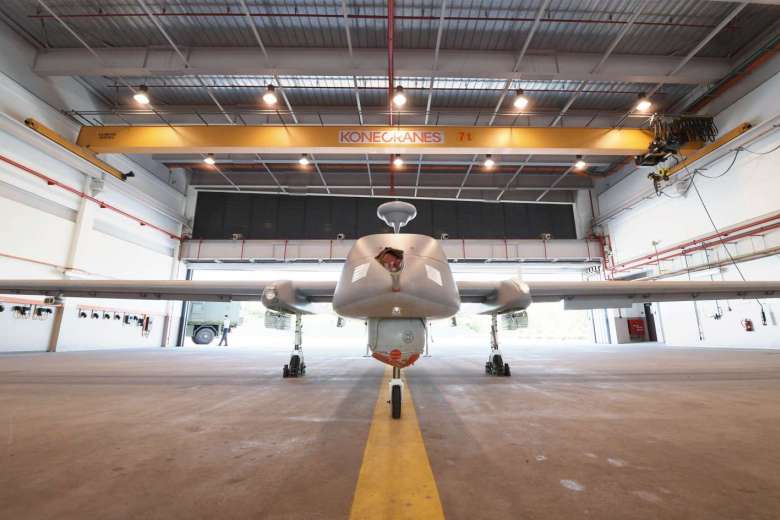RSAF tracking drone technology with an eye to renewing its capabilities: Chief of Air Force
Sign up now: Get ST's newsletters delivered to your inbox

This file picture taken on March 15, 2017 shows a Republic of Singapore Air Force Heron 1 unmanned aerial vehicle.
ST PHOTO: ALPHONSUS CHERN
Follow topic:
SINGAPORE - The Republic of Singapore Air Force (RSAF) is tracking developments in drone technology, and studying new concepts to "achieve the outcomes we want", said the Chief of Air Force.
Major-General Kelvin Khong noted that the RSAF's unmanned aerial vehicles (UAVs) will be approaching obsolescence in the next few years, as they have a shorter lifespan than manned platforms.
Plans to renew the Air Force's drone capability will be announced in time, he added.
The RSAF currently operates the Hermes 450 and Heron 1 UAVs, which have been in service since 2007 and 2012 respectively.
Such UAVs, with their capable sensors and persistence, will continue to play a key role to provide air intelligence, surveillance and reconnaissance capabilities for the Singapore Armed Forces, said Maj-Gen Khong on Friday (Feb 14) in an e-mail interview to local and foreign media.
Their ability to integrate with other SAF platforms, such as fighter aircraft and the High Mobility Artillery Rocket System (Himars), allows precise firepower to be delivered, even when the adversary is trying to hide, he said.
"Besides their role in conventional operations, our UAVs also play a significant role in homeland security operations to provide vital intelligence to our forces on the ground during events such as Singapore's National Day Parade and the (Trump-Kim Summit)."
UAVs are getting smaller in size and better in endurance, said Maj-Gen Khong, and the smaller ones can be paired with larger UAVs as they have a smaller signature and can be operated closer to the adversary without being noticed.
He emphasised that the development of the RSAF in the future must be multi-faceted.
Besides investing in the fifth-generation F-35 Joint Strike Fighter and unmanned technologies, the Air Force also has to build up its capabilities in data analytics and artificial intelligence, he said.
Maj-Gen Khong made the point that air combat of the future will not be the traditional fight between large formations of aircraft, where the side with numerical advantage has the upper hand.
"It is not just about numbers. It is about how effectively one can combine traditional air combat capabilities with technologies that multiply the effects of air power.
"It is also about how effectively one can combine combat power across multiple domains to present dilemmas to the adversary so it is impossible for the adversary to defend," he said, adding that this means the RSAF has to work much more closely with the defence technology community and integrate better with the rest of the SAF.

